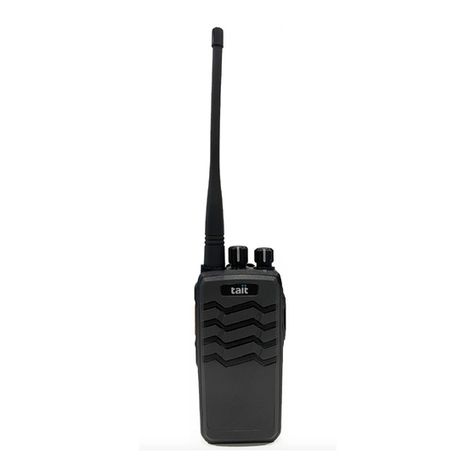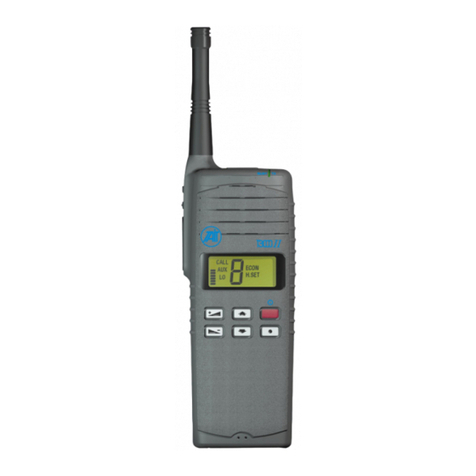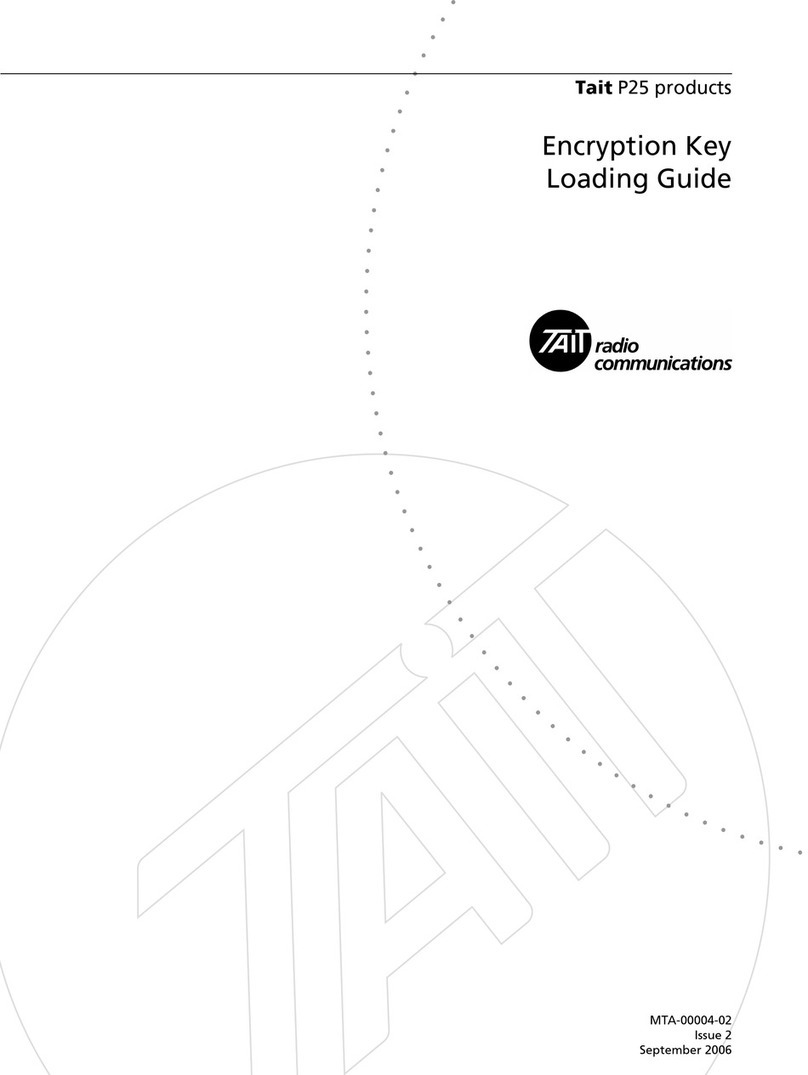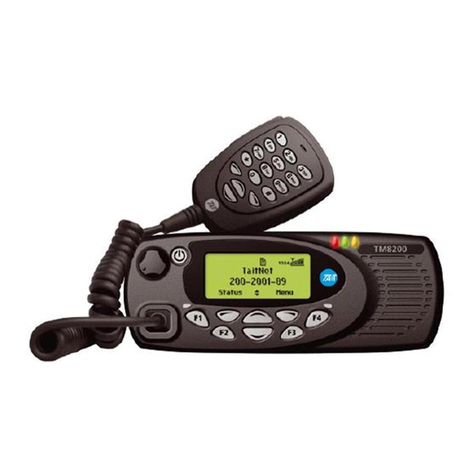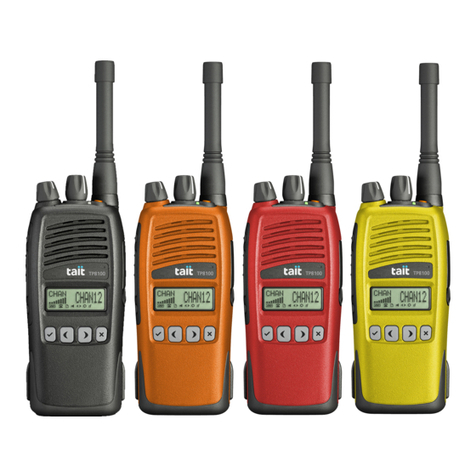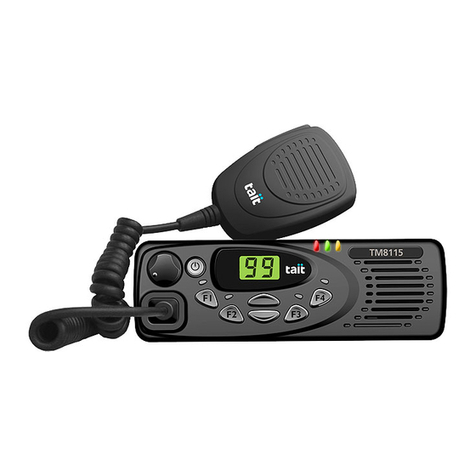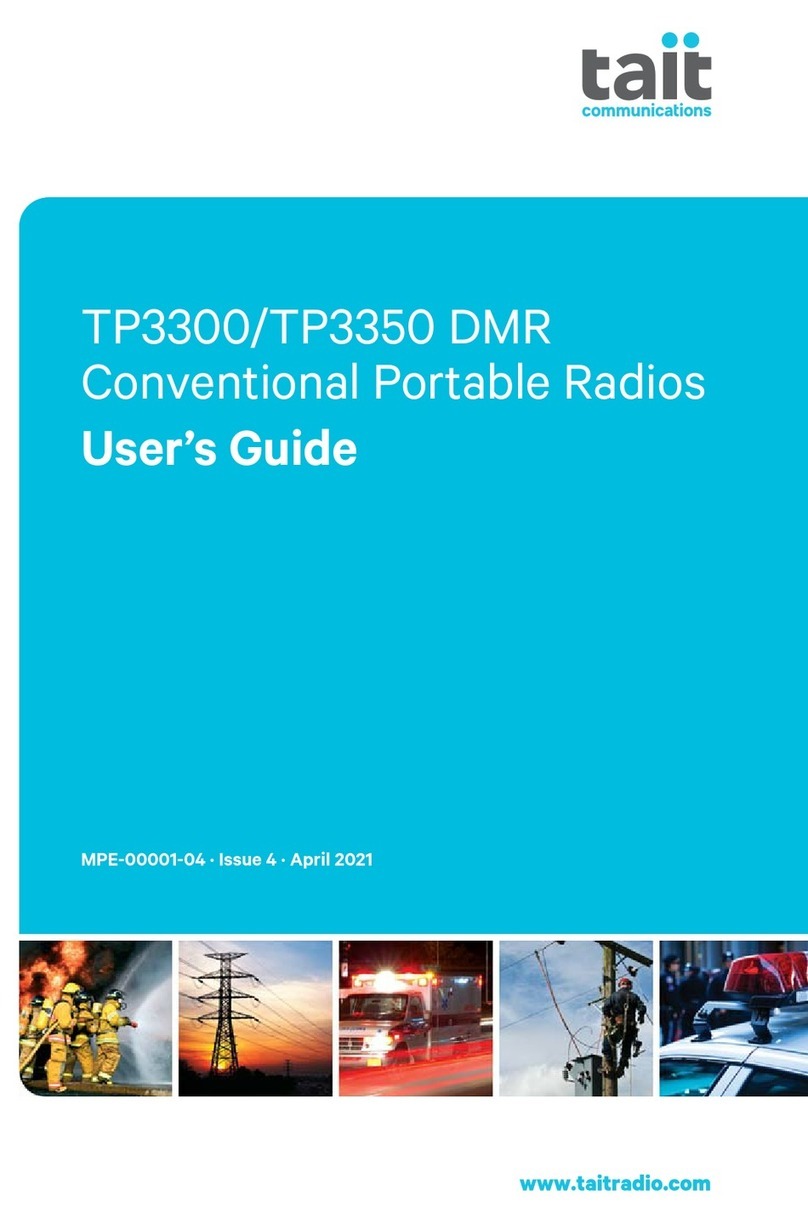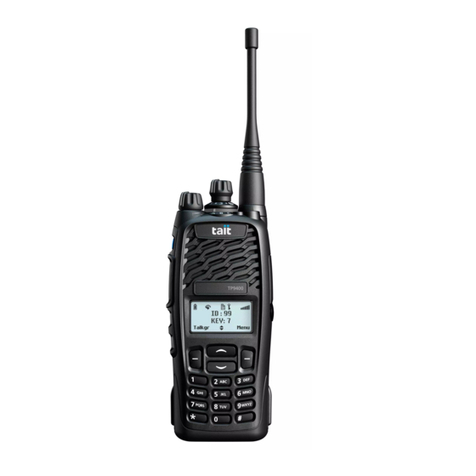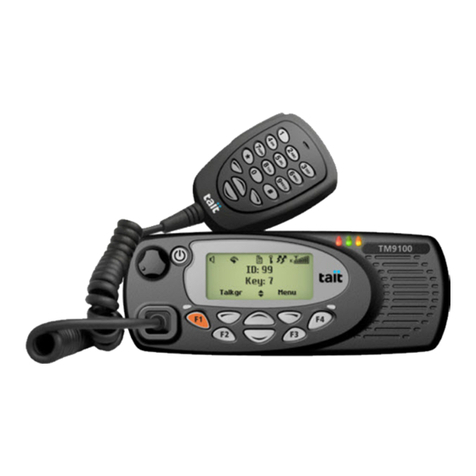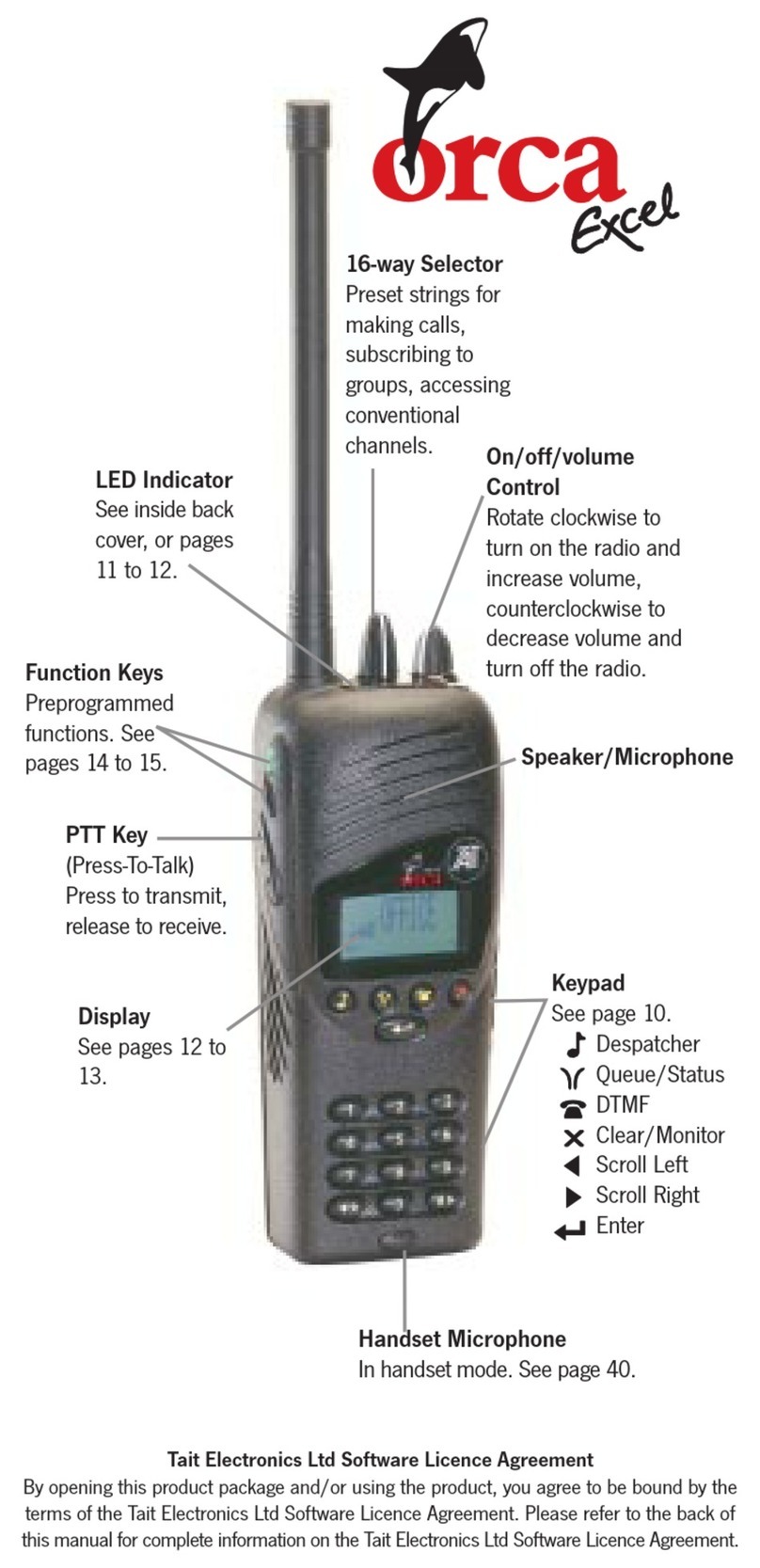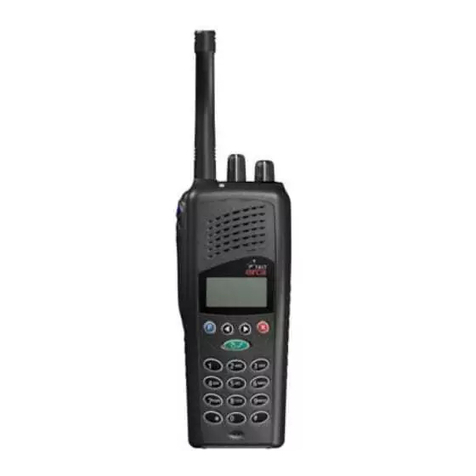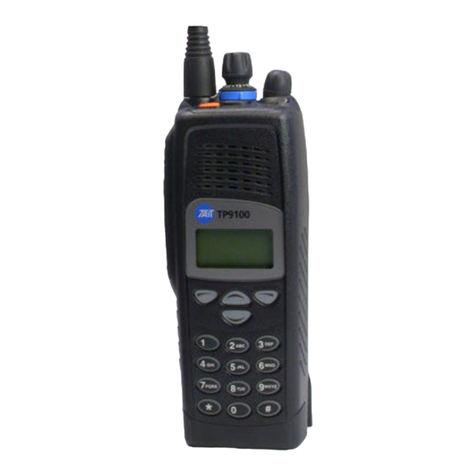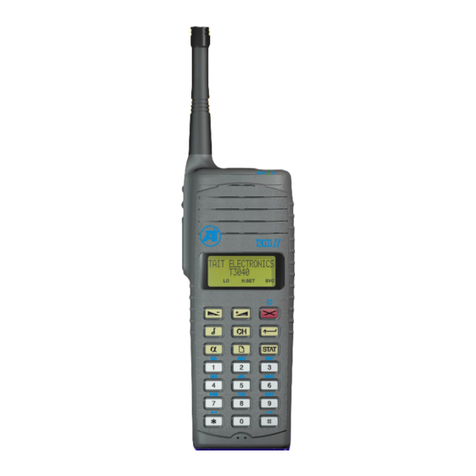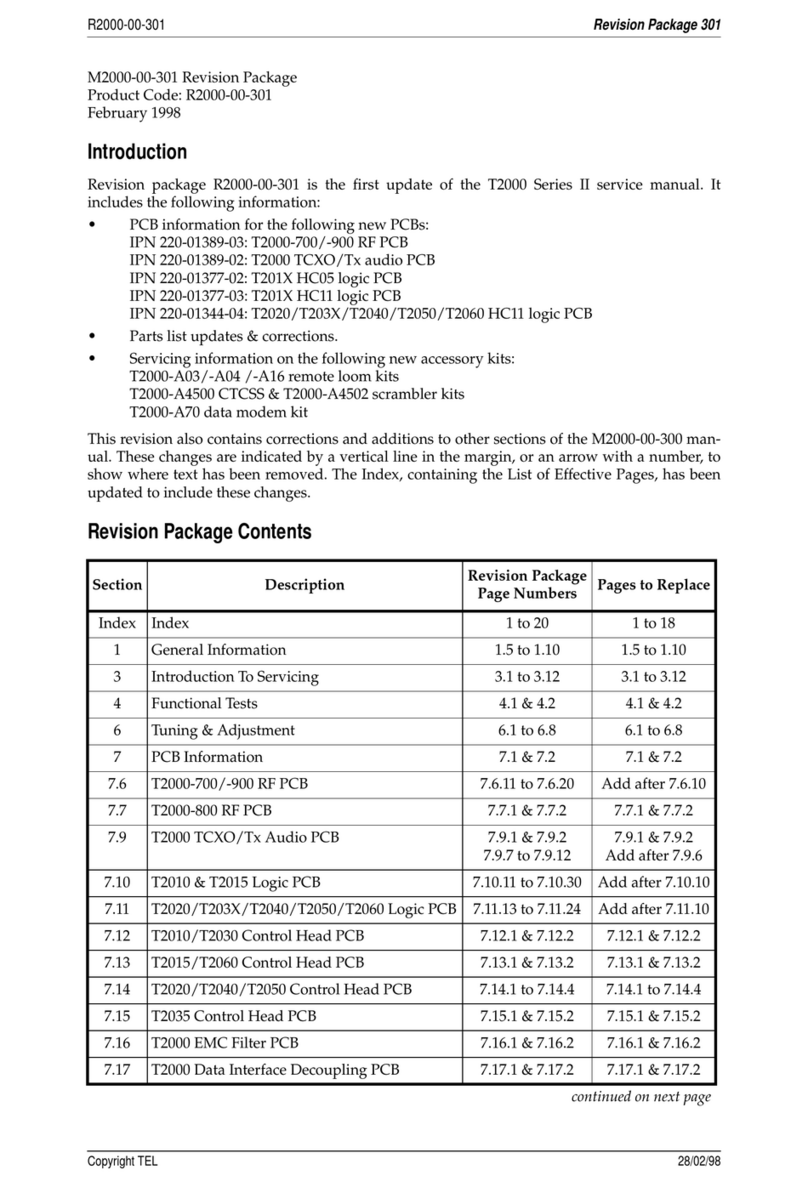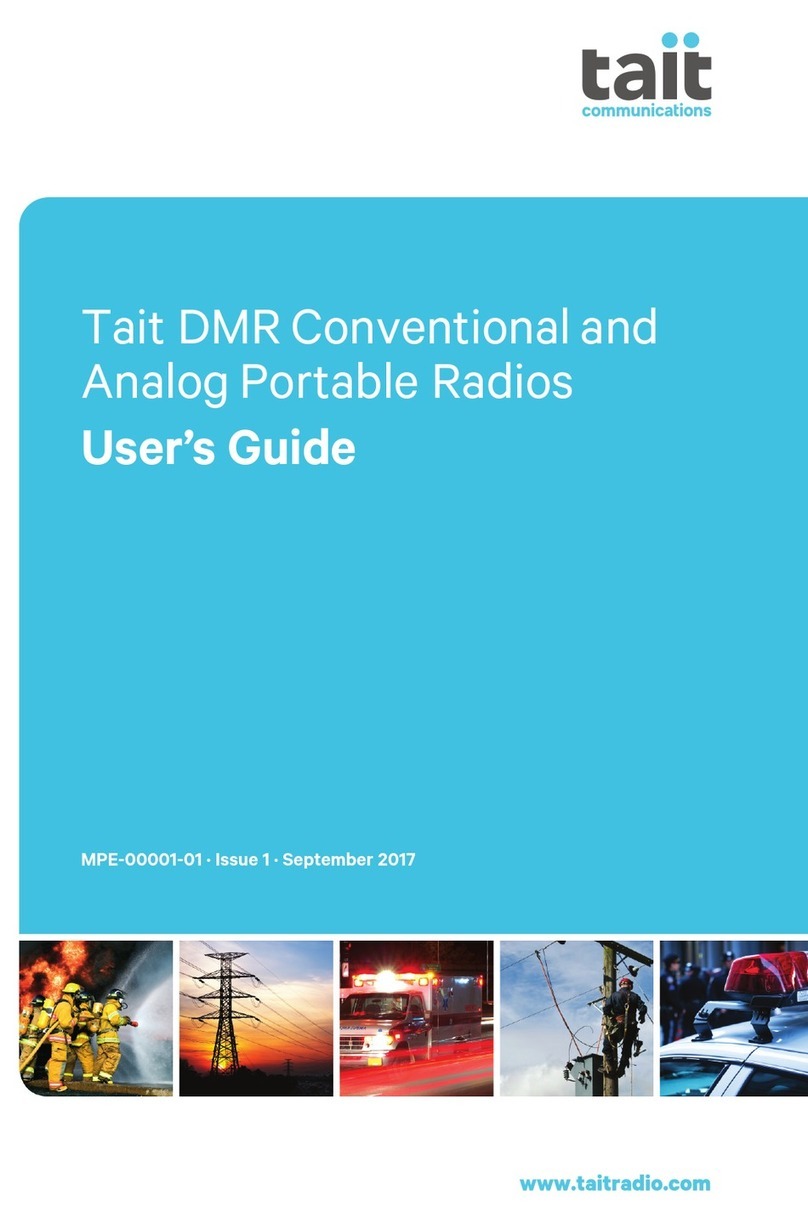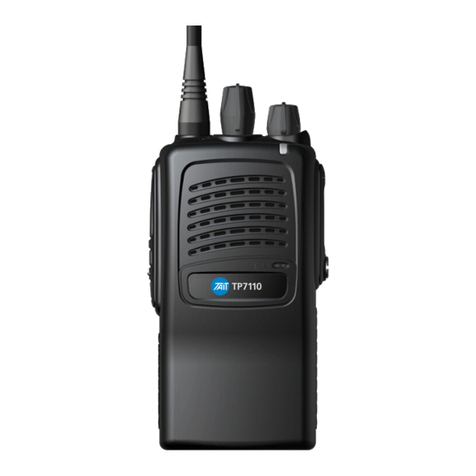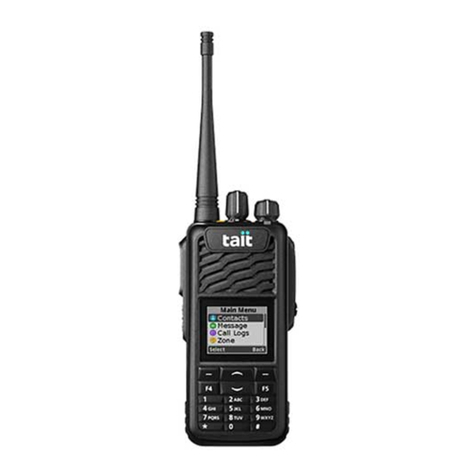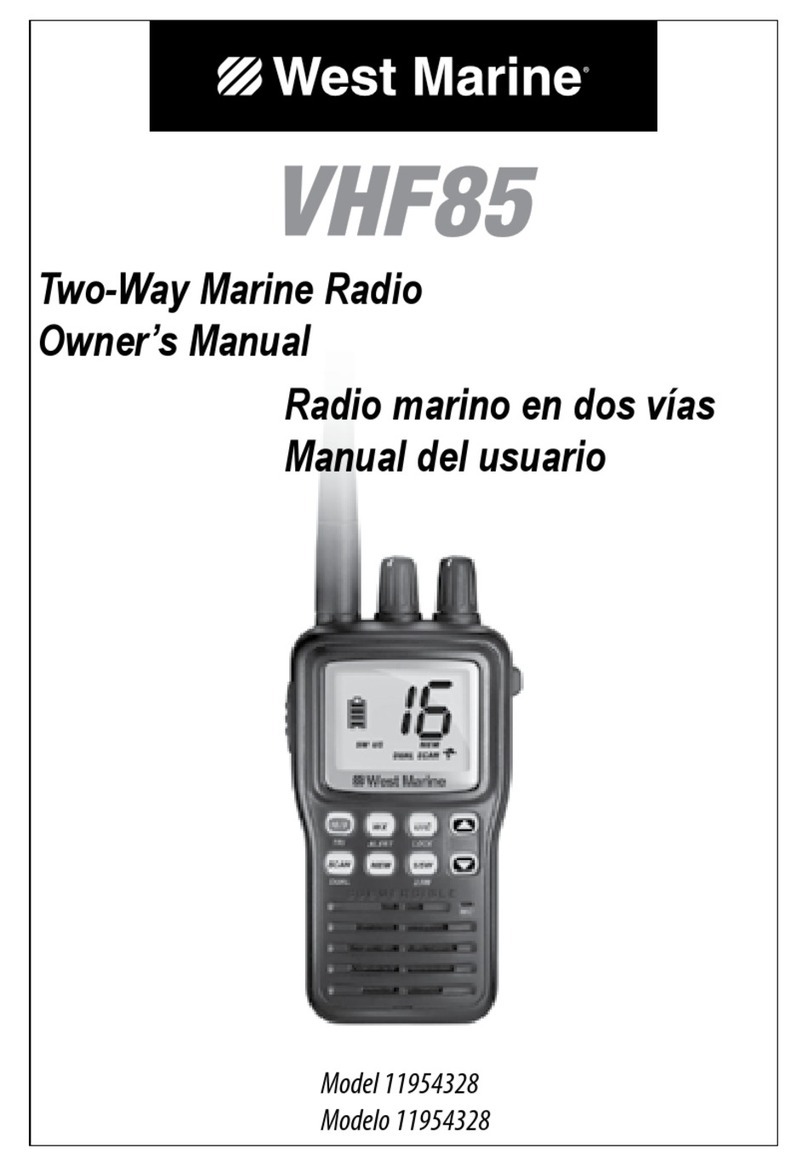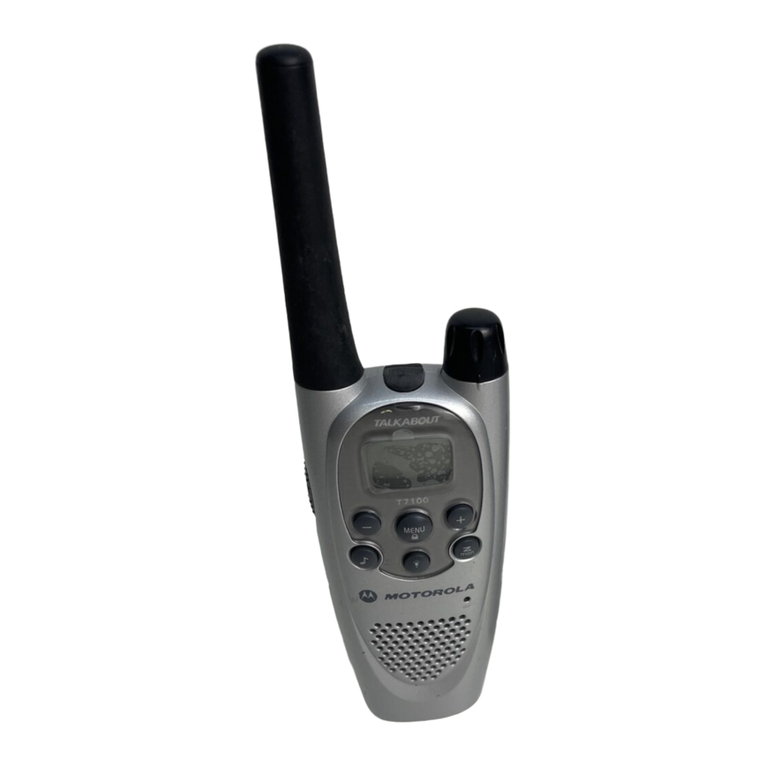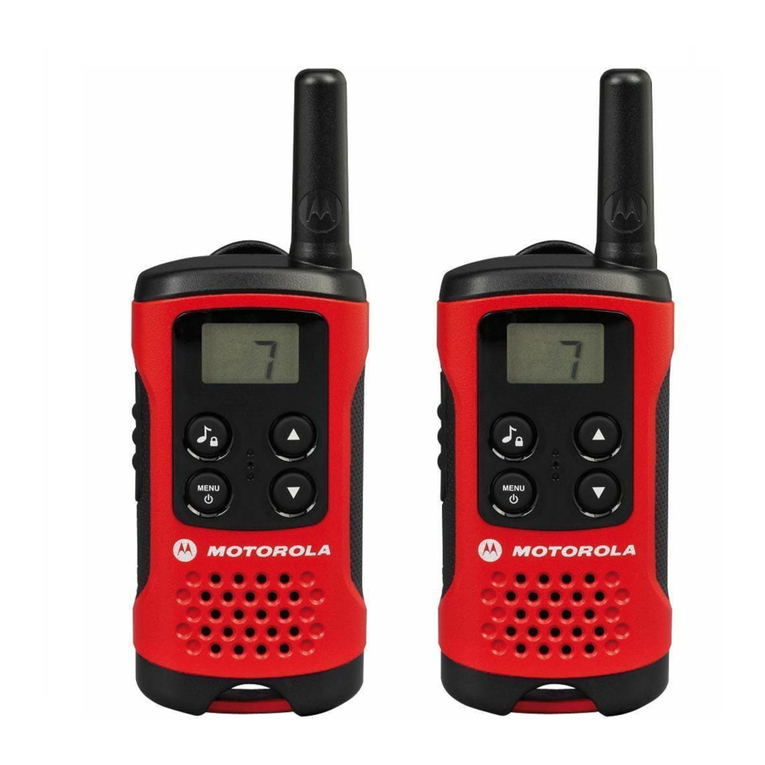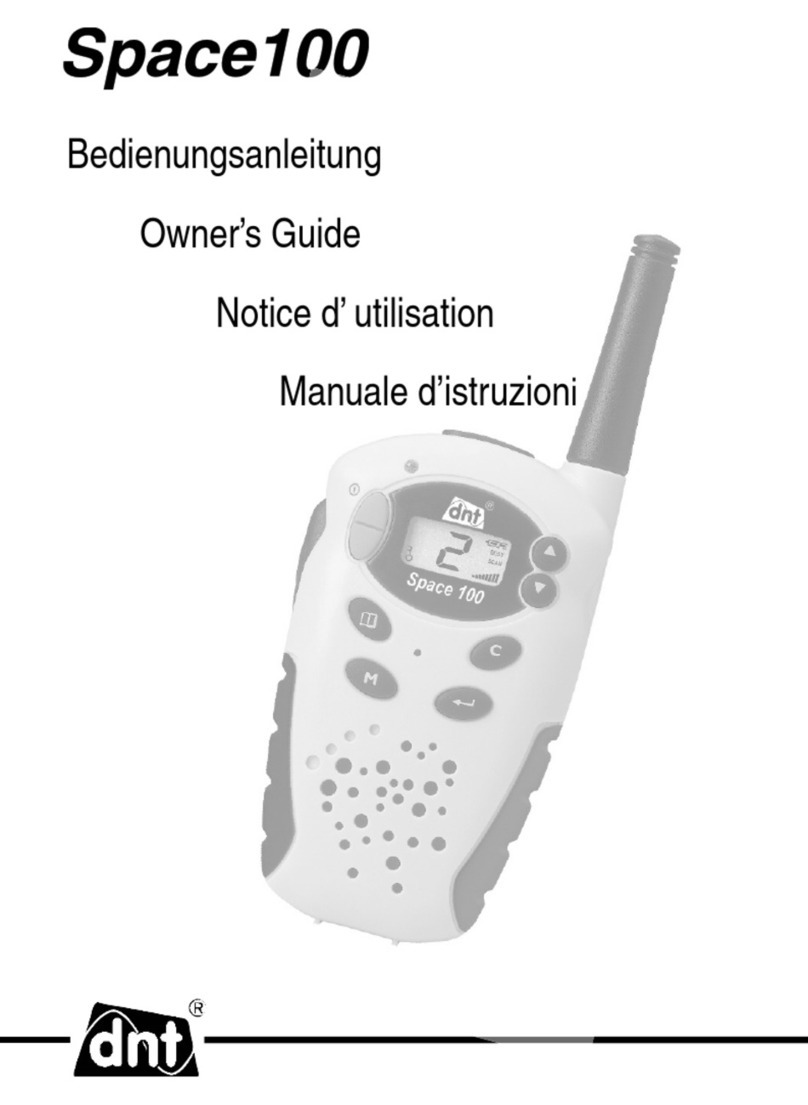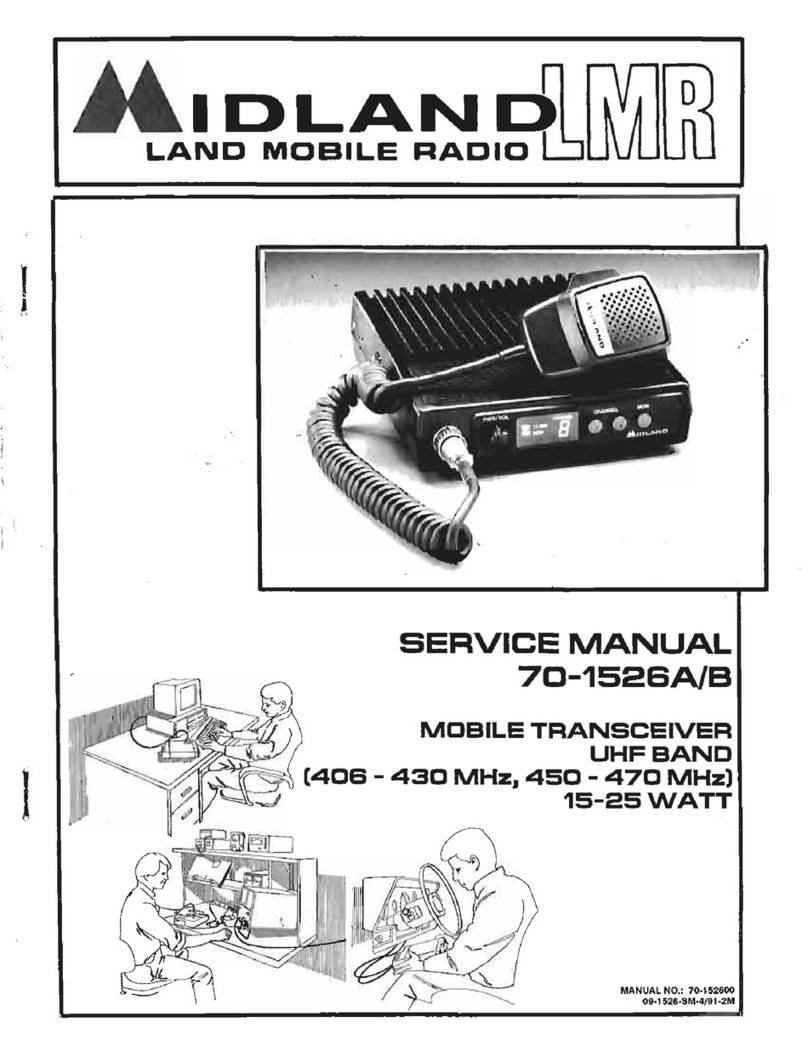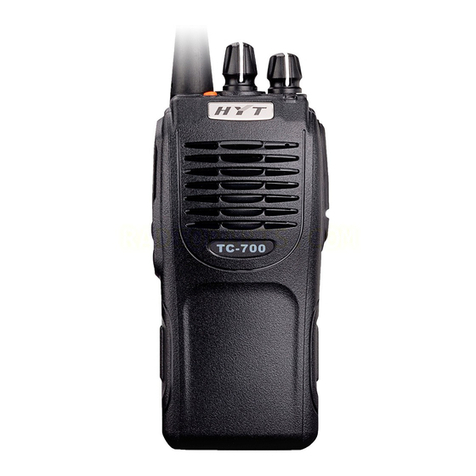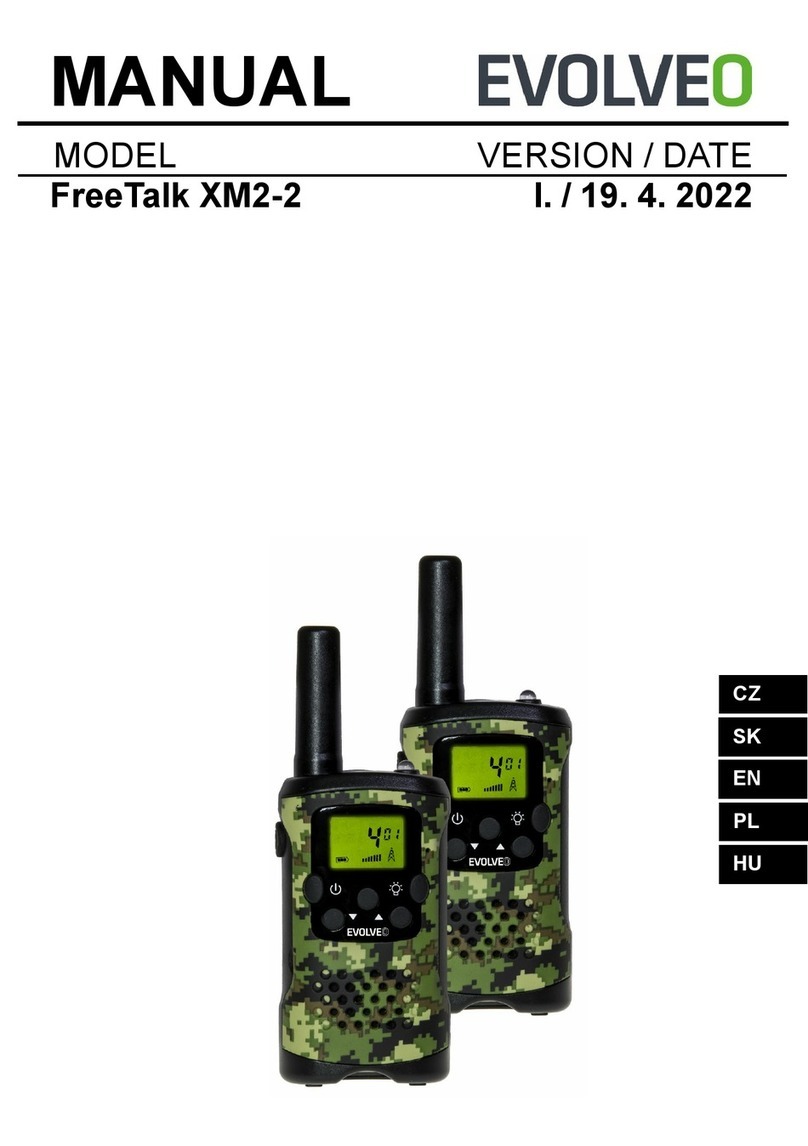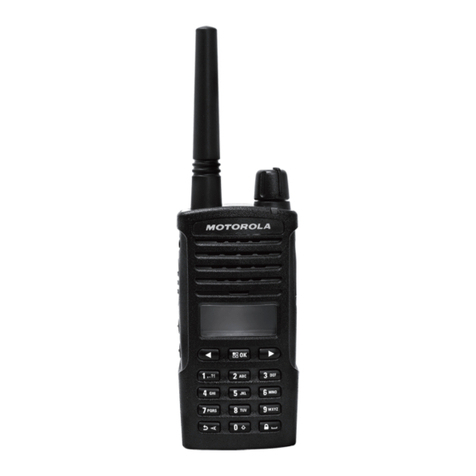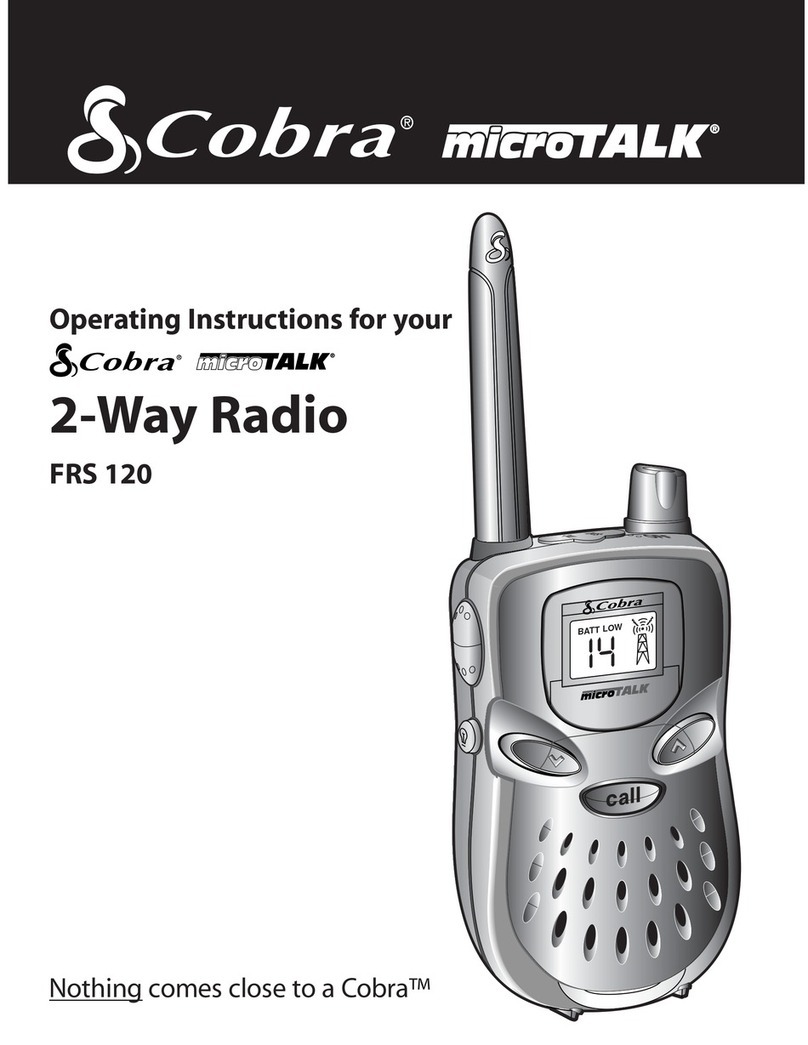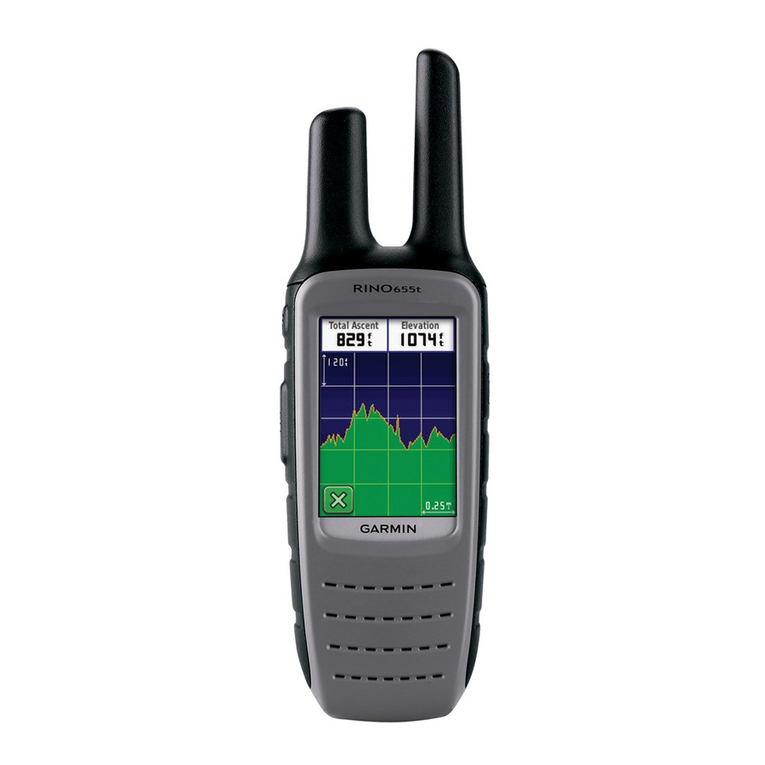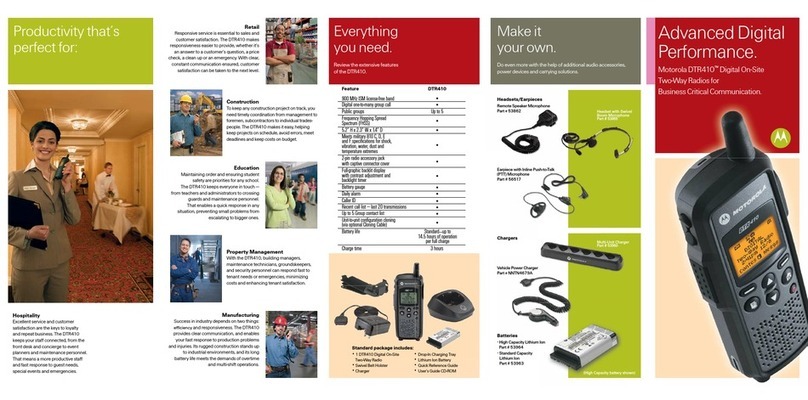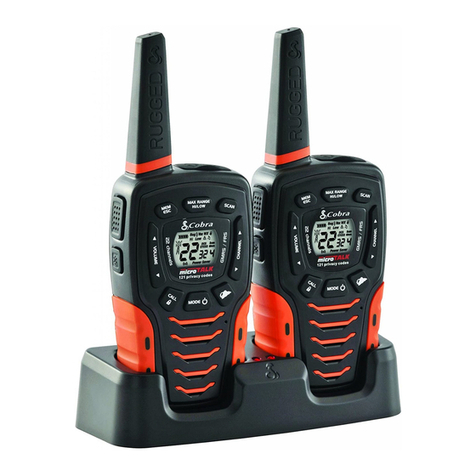Scanning
The scan feature is used to monitor groups of channels, searching for
transmissions carrying tones or codes specifically programmed in the radio.
• Scanning halts when valid traffic is detected on a
channel in the scan group. Once activity ceases, the
radio resumes scanning.
• While the radio is scanning, you may lift the
microphone off the microphone clip and make a call. If
the radio is monitoring a busy channel, it remains on
that channel, otherwise it returns to the programmed
home channel.
1 Check that the microphone is on the microphone clip
(although your radio may be programmed to scan
while the microphone is off the clip).
2 Press the scan key ( ) to activate scanning.
3 Use the and keys to scroll through the
available scan groups, or
Press the
M1
or
M2
key to switch directly to a
programmed scan group. Memory key scan groups are
assigned when the radio is programmed.
4 To cancel scanning, press the scan key or select a non-
scanning channel, using the memory keys.
Scan
Mode
5-Tone Calls
Your T2017 may be programmed for 5-tone selective calls. 5-tone calls can
be made to specific individuals or groups on channels programmed with 5-
tone. The radio must have a 5-tone module installed and be programmed
appropriately.
To call another party using 5-tone:
1 Select a channel with 5-tone programmed.
2 Check that the channel is free (busy LED off).
3 Press the PTT key, or
press the function key (
F1
or
F2
) programmed for
a preset 5-tone call.
4 When a reply is received, lift the microphone off the
microphone clip, press the PTT and begin speaking.
When a 5-tone call is received, the radio gives a ringing
tone. To accept the call, lift the microphone off the
microphone clip, press the PTT key and begin speaking.
To reject a call, press any key other than the PTT and the
ringing stops.
When a 5-tone group call is received, the radio gives one
ringing tone and the caller broadcasts a message. There is
usually no need to respond to 5-tone group calls.
Sending
a 5-Tone
Call
5-Tone
Group Calls
Receiving a
5-Tone Call
Selecting a
Scan Group
Additional Information
Your T2017 may be programmed for emergency mode.
Emergency mode is activated either by a hidden switch or
by giving a long press of a programmed function key (
F1
or
F2
). An emergency call is then sent to a predeter-
mined location, such as the dispatcher. The radio must
have either 5-tone or G-STAR signaling installed and be
programmed appropriately.
• During an emergency mode, the radio switches in and
out of transmit mode, so that activity around the radio
can be monitored.
• The radio that receives your emergency call can
transmit a code to return your radio to normal
operation. Alternatively, switching the radio off and
then on resets the radio.
To conserve battery power, the radio may be programmed
to dim or turn off the control head display and the keypad
backlighting, after a preset period of inactivity.
Any valid activity on the selected channel restores the radio
to full operation. The radio is also returned to full operation
by pressing the PTT or any control head key.
If the control head display flashes either 31, 32 or 33, then
an error has occurred in the radio’s signaling module. Press
any key to acknowledge the message and contact your
local dealer for assistance.
Once you have pressed a key to clear the message, you
can now continue to use your radio, but without any
signaling functions.These functions include 5-tone or G-
STAR emergency calling, 2-tone decoding, G-STAR
encoding and 5-tone operations.
If none of the control head LEDs illuminate when the radio
is powered on, check all the leads, in-line fuses and
connections between the battery and the radio. If this does
not reveal a fault, contact your local dealer for assistance.
Economy
Mode
Emergency
Mode
Trouble-
shooting
Error
Messages
G-STAR ID Signaling
Your T2017 can be programmed with G-STAR ID signaling. This allows
individual radio users to be identified by assigning a unique G-STAR ID to
each radio. This ID is sent out each time the radio transmits on a channel
with G-STAR signaling assigned, and is decoded by the dispatcher, giving a
visual identification of the radio in use.Your radio may be programmed to
give a short beep after the G-STAR ID has been sent.
The radio must have a signaling module installed and be programmed
appropriately.
2-Tone Decoding
2-tone decoding is used to selectively call individual or groups of radios.To
decode 2-tone calls, your radio must have a signaling module installed
and be programmed appropriately.
When a 2-tone call is received, the radio gives a beep,
indicating the type of 2-tone call that has been received.
• Individual call: one long beep.
• Group call: two medium beeps.
• Super group call: three short beeps.
To accept the call, lift the microphone off the microphone
clip, press the PTT key, and begin speaking.
Receiving a
2-Tone Call
Copyright © Tait Electronics Ltd March 2002 M2017-NA-000-804
Removing the Radio from the Vehicle
For security, the radio may be removed from the vehicle. The radio can be
released from its cradle using the special cradle key, as follows:
1 Switch the radio off.
2 Insert the cradle key in the slot beside the on/off/
volume control.
3 Holding the radio’s control head by its edges, pull the
radio towards you until it is clear of the cradle.
4 Disconnect the antenna and other cables from the rear
of the radio.
5 Remove the radio.
